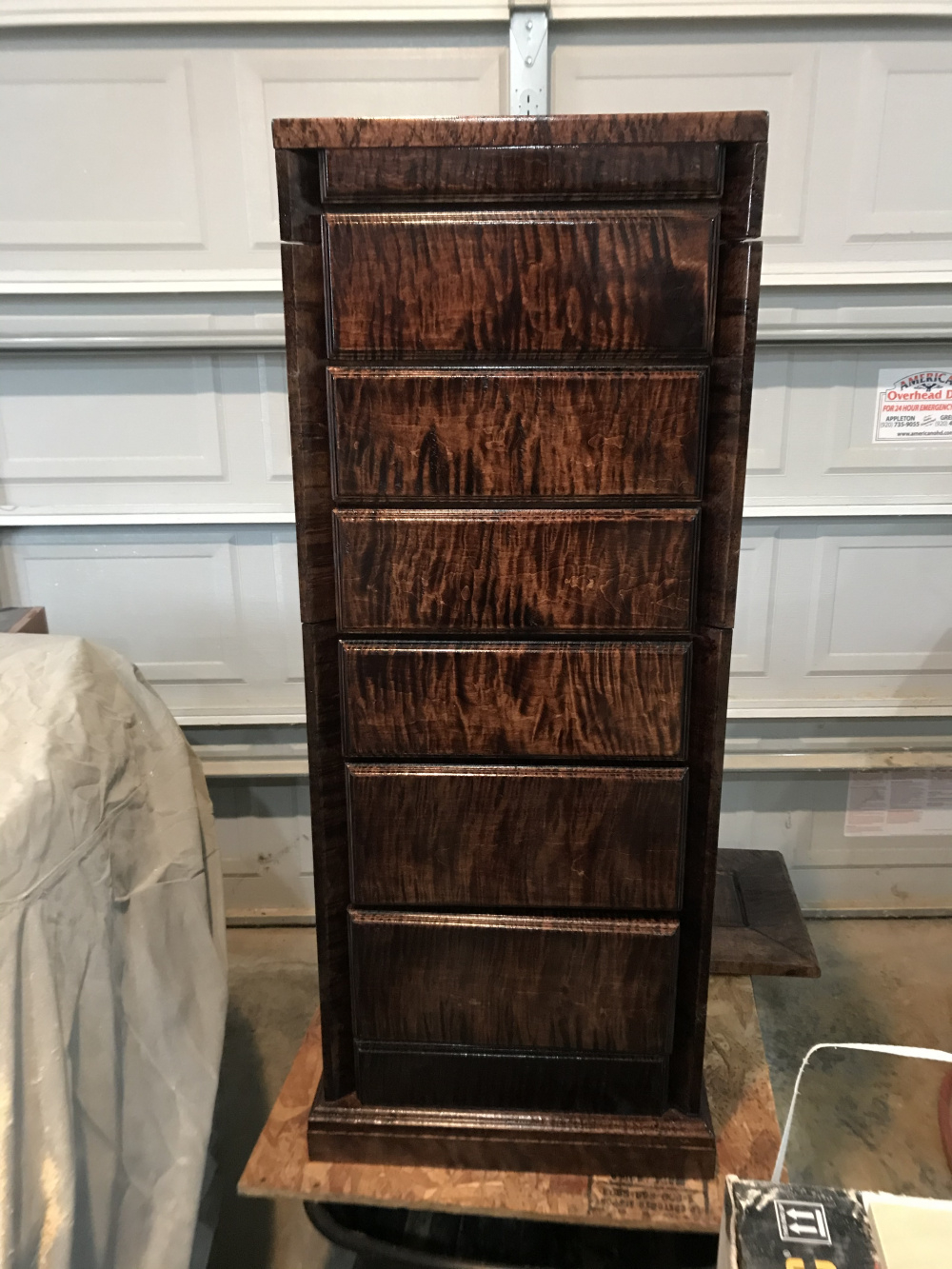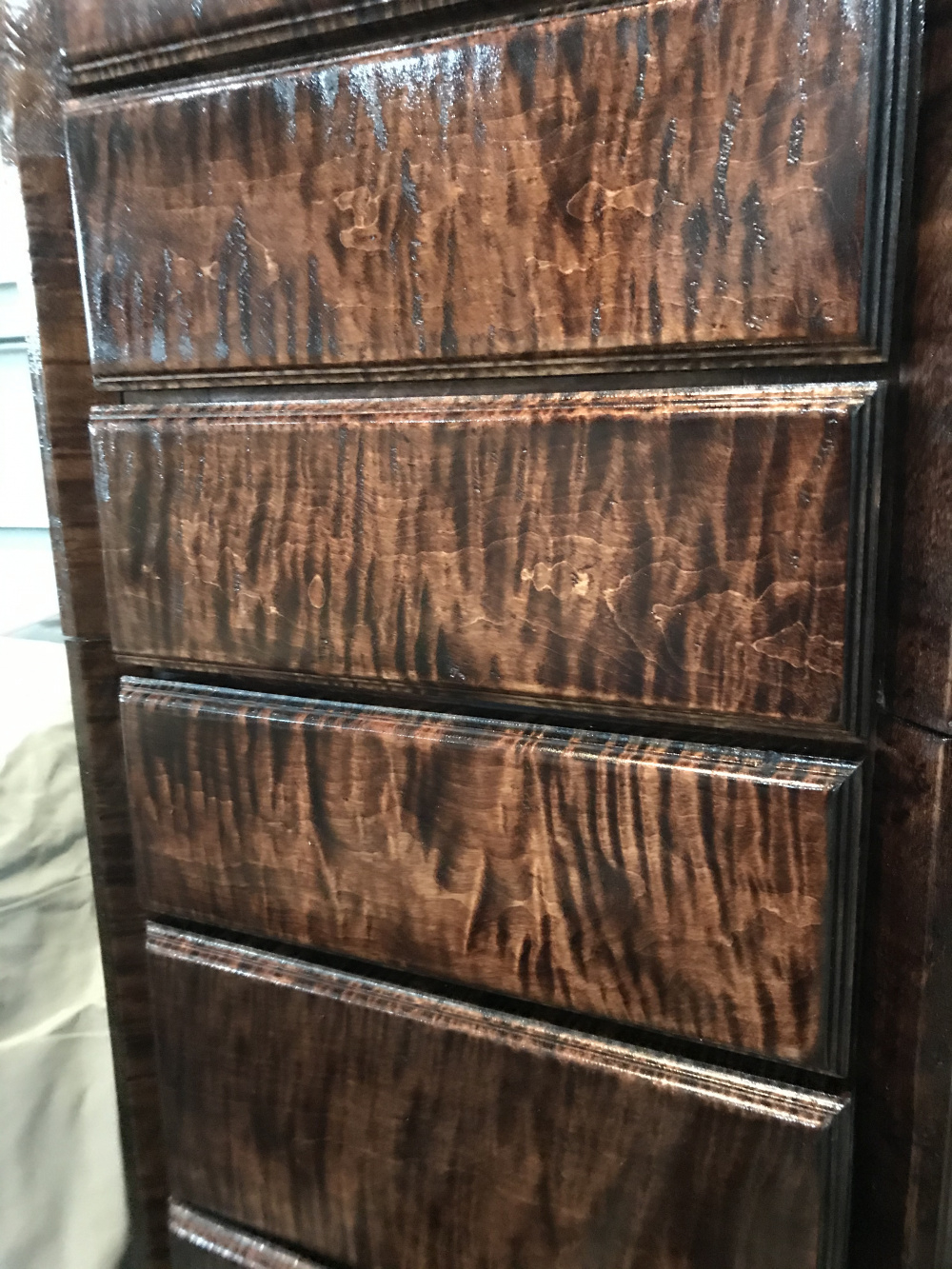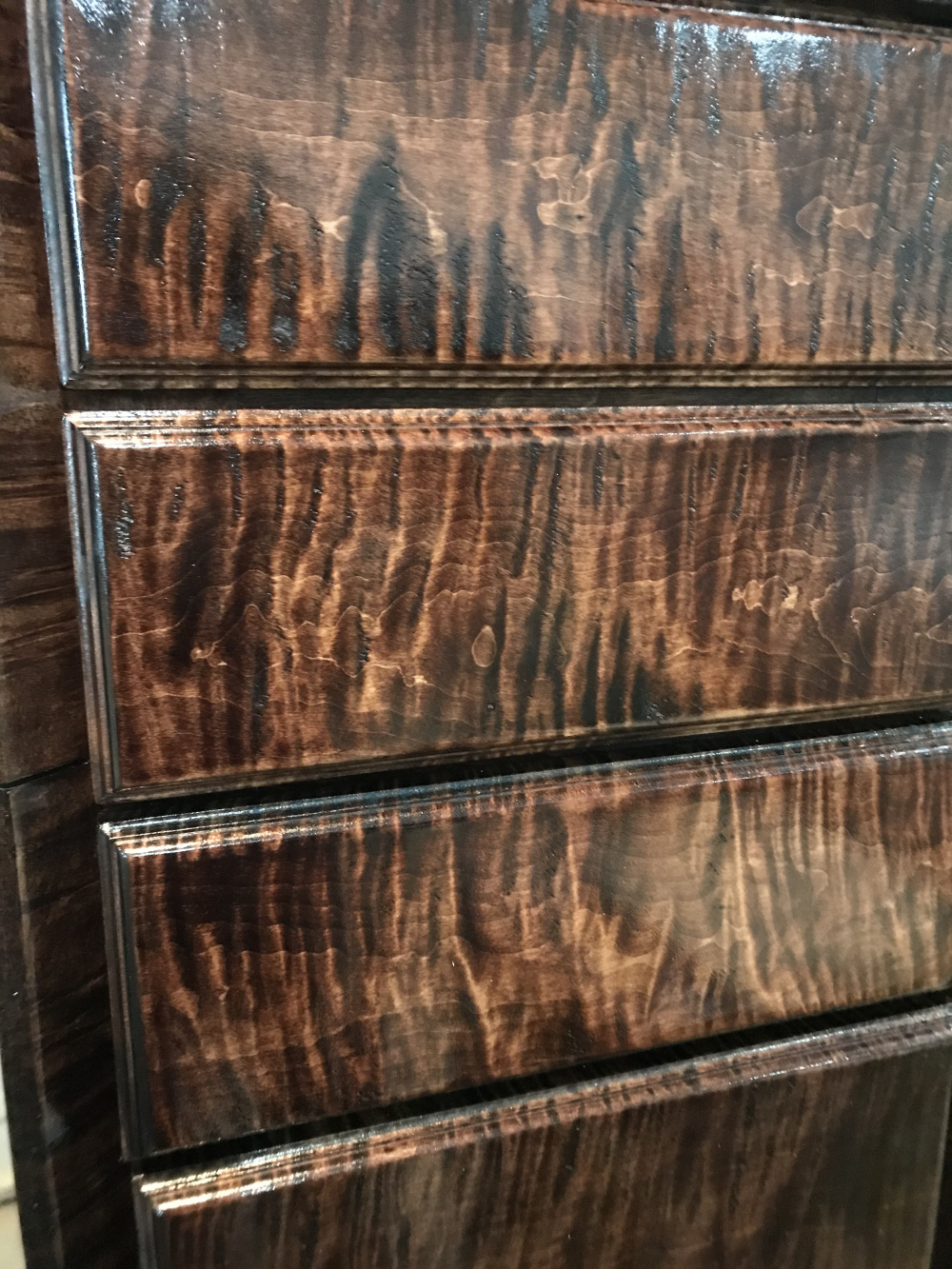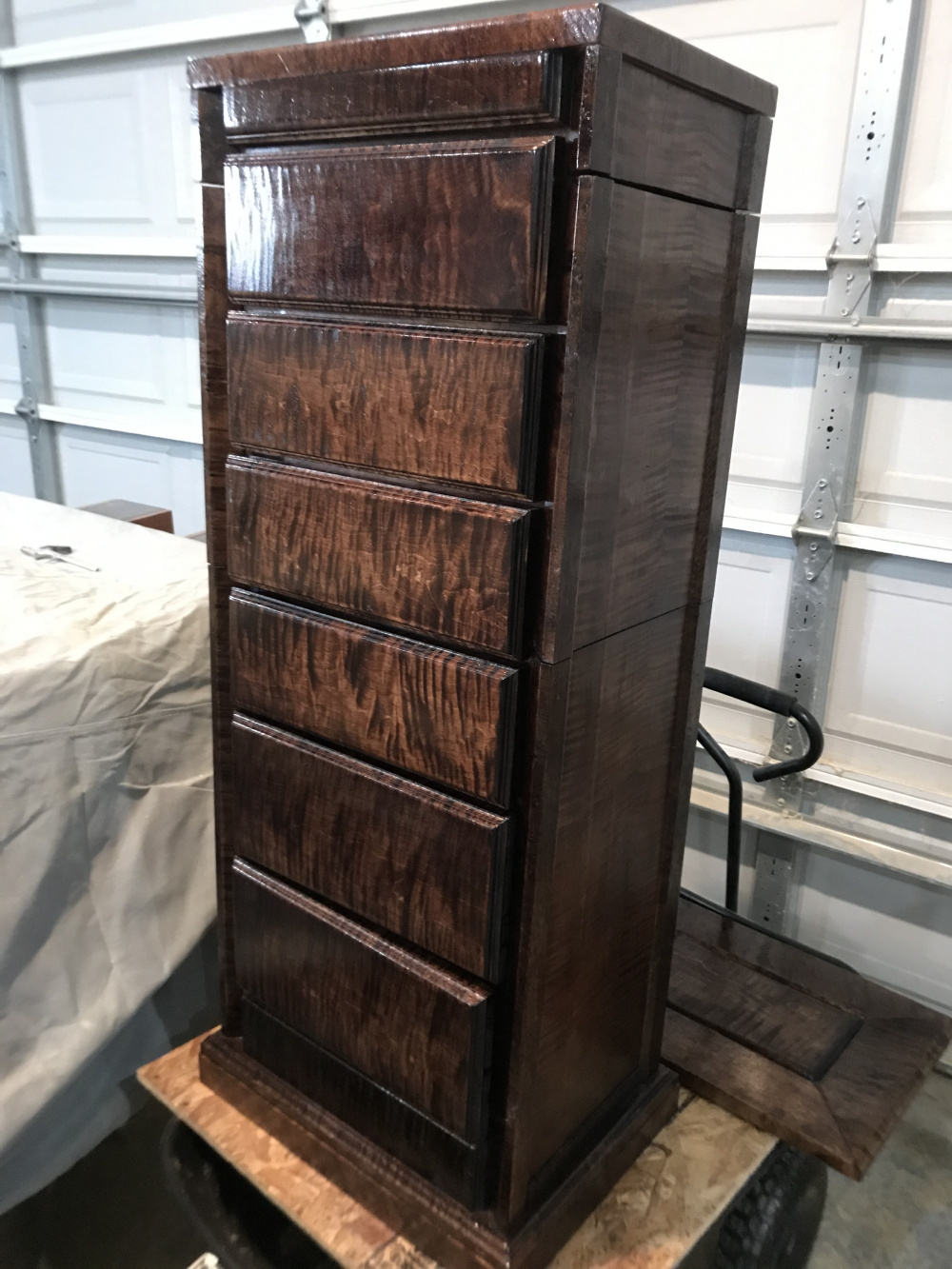Home ›
Site Links
Howdy, Stranger!
It looks like you're new here. If you want to get involved, click one of these buttons!
Quick Links
Categories
In this Discussion
Who's Online (0)
Not a speaker
I’m calling this related because I’m sharing it for the purpose of the finish that could be applied to speakers. Admin can feel free to delete it if you disagree.
Im building my wife a jewelry chest and am pleased with the finish and how it shows grain.
The maple is solid Birdseye, solid figured on the drawer fronts, and curly veneer on the sides. The veneer is stable and consistent in pattern, but did not pop nearly as much as the solid. Color is Transtint coffee brown liquid dye dilluted with denatured alcohol. Finish is General Finishes Arm R Seal oil.




Im building my wife a jewelry chest and am pleased with the finish and how it shows grain.
The maple is solid Birdseye, solid figured on the drawer fronts, and curly veneer on the sides. The veneer is stable and consistent in pattern, but did not pop nearly as much as the solid. Color is Transtint coffee brown liquid dye dilluted with denatured alcohol. Finish is General Finishes Arm R Seal oil.





Comments
I don't work much with veneer, but i did once try to dye veneer and i used transtint in water, but it make the veneer curl up and crack due to the water drying. Does transtint with alcohol have the same issue?
Does that help with any other species? My planer made tiny tear outs on the face of a hickory board.